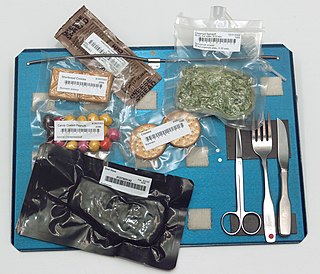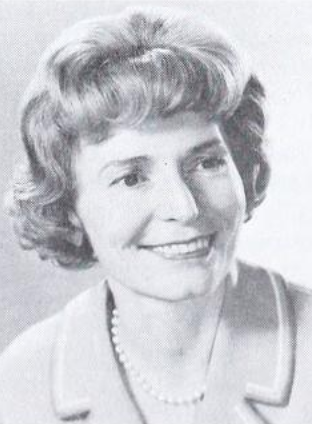
Apollo 10 was the fourth human spaceflight in the United States' Apollo program and the second to orbit the Moon. NASA, the mission's operator, described it as a "dress rehearsal" for the first Moon landing. It was designated an "F" mission, intended to test all spacecraft components and procedures short of actual descent and landing.

Apollo 12 was the sixth crewed flight in the United States Apollo program and the second to land on the Moon. It was launched on November 14, 1969, by NASA from the Kennedy Space Center, Florida. Commander Charles "Pete" Conrad and Lunar Module Pilot Alan L. Bean performed just over one day and seven hours of lunar surface activity while Command Module Pilot Richard F. Gordon remained in lunar orbit.

Skylab was the United States' first space station, launched by NASA, occupied for about 24 weeks between May 1973 and February 1974. It was operated by three trios of astronaut crews: Skylab 2, Skylab 3, and Skylab 4. Operations included an orbital workshop, a solar observatory, Earth observation and hundreds of experiments. Skylab's orbit eventually decayed and it disintegrated in the atmosphere on July 11, 1979, scattering debris across the Indian Ocean and Western Australia.

Alan LaVern Bean was an American naval officer and aviator, aeronautical engineer, test pilot, NASA astronaut and painter. He was selected to become an astronaut by NASA in 1963 as part of Astronaut Group 3, and was the fourth person to walk on the Moon.

Russell Louis "Rusty" Schweickart is an American aeronautical engineer, and a former NASA astronaut, research scientist, U.S. Air Force fighter pilot, as well as a former business executive and government executive.

Anthony Wayne "Tony" England is an American former NASA astronaut. Selected in 1967, England was among a group of astronauts who served as backups during the Apollo and Skylab programs. Like most others in his class, he flew during the Space Shuttle program, serving as a mission specialist on STS-51-F in 1985. He has logged more than 4,000 hours of flying time and 188 hours in space.

Ronald Ellwin Evans Jr. was an American electrical engineer, aeronautical engineer, officer and aviator in the United States Navy, and NASA astronaut. As Command Module Pilot on Apollo 17 he was one of the 24 astronauts to fly to the Moon, and one of 12 people to fly to the Moon without landing.

Don Leslie Lind was an American scientist, naval officer, aviator, and NASA astronaut. He graduated from the University of Utah with an undergraduate degree in physics in 1953. Following his military service obligation, he earned a PhD in high-energy nuclear physics from the University of California, Berkeley in 1964.

Voyage is a 1996 hard science fiction novel by British author Stephen Baxter. The book depicts a crewed mission to Mars as it might have been in another timeline, one where John F. Kennedy survived the assassination attempt on him on 22 November 1963. Voyage won a Sidewise Award for Alternate History, and was nominated for the Arthur C. Clarke Award in 1997.

Freeze-dried ice cream, also called astronaut ice cream or space ice cream, is ice cream that has had most of the water removed from it by a freeze-drying process. Compared to regular ice cream, it can be kept at room temperature without melting, is dry and more brittle and rigid, but still soft when bitten into. It was developed by Whirlpool Corporation under contract to NASA for the Apollo missions. However, it was not used on any Apollo mission. Freeze-dried foods were developed so that foods could be sent on long-duration spaceflights, and to reduce the weight of the water and oxygen normally found in food. The process of freeze-drying also eliminates the possibility of food melting and spilling as liquid in zero-gravity, which would be problematic.

NASA Astronaut Group 4 was a group of six astronauts selected by NASA in June 1965. While the astronauts of the first two groups were required to have an undergraduate degree or the professional equivalent in engineering or the sciences, they were chosen for their experience as test pilots. Test pilot experience was waived as a requirement for the third group, and military jet fighter aircraft experience could be substituted. Group 4 was the first chosen on the basis of research and academic experience, with NASA providing pilot training as necessary. Initial screening of applicants was conducted by the National Academy of Sciences.

Space food is a type of food product created and processed for consumption by astronauts during missions to outer space. Such food has specific requirements to provide a balanced diet and adequate nutrition for individuals working in space while being easy and safe to store, prepare and consume in the machinery-filled weightless environments of crewed spacecraft. Space food is commonly freeze-dried to minimize weight and ensure long shelf life.

Tracy Caldwell Dyson is an American chemist and NASA astronaut. She was a mission specialist on Space Shuttle Endeavour flight STS-118 in August 2007 and part of the Expedition 23 and Expedition 24 crew on the International Space Station from April 2010 to September 2010. She has completed three spacewalks, logging more than 22 hours of extravehicular activity. She is currently in space since March 23, 2024 for a third time, for a six-month mission onboard the ISS.
Yajaira Sierra-Sastre is a Puerto Rican materials scientist, educator, and aspiring astronaut. She was part of a six-person crew, and the only Hispanic, selected to participate in a four-month-long, Mars analog mission funded by NASA. Sierra-Sastre aspires to become the first Puerto Rican woman to travel to outer space.

Kellie Gerardi is an American social media influencer, popular science communicator, and citizen astronaut who made a sub-orbital spaceflight with Virgin Galactic as a payload specialist in 2023. She has worked at Palantir Technologies since 2015, where she leads logistical operations.

Rita Rapp was an American physiologist who led the Apollo Food System team. She won a NASA Exceptional Service Medal, the United States Civil Service Commission Federal Woman's Award and University of Dayton Distinguished Alumni Award. A plaque in her honor remains at the Johnson Space Center.
Doris Davis Centini was a food scientist and home economist who led Stouffer's Food's home economics department. She served as manager of research and development at Stouffer's during development of the Stouffer's portions of the Apollo 11 space crew's meals eaten in quarantine on their return from space. She applied her home economics background in helping to develop Stouffer’s freeze-dried method. One of her aides in that department was food scientist Julie Stewart.
Sara Thompson was a food scientist. She was the quality control supervisor at Stouffer's Food's and worked with Doris Davis Centini during development of the Stouffer's portions of the Apollo 11 space crew's meals eaten in quarantine on their return from space.

Mary Victoria Richardson Klicka was a Canadian-American registered dietitian and food technologist for the United States Army. She designed MREs and provisions for astronauts in the Mercury, Gemini, and Apollo programs. In 1970, she received the Distinguished Civilian Service Award from the Department of Defense.















